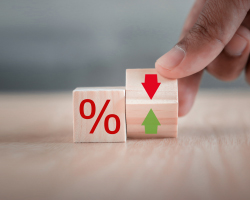Understanding and Calculating Exchange Rates: A Comprehensive Guide
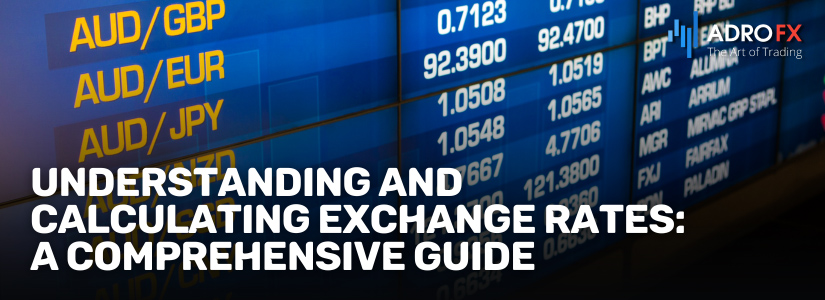
In the dynamic world of global finance, exchange rates serve as the invisible threads connecting international trade and investment. They denote the value of one currency in relation to another and fluctuate due to a variety of factors, including economic policies, geopolitical events, and market sentiment. Similar to how tides are influenced by the moon, exchange rates ebb and flow under the pressure of economic forces and investor behavior. Understanding these rates is essential for anyone operating in the global marketplace, whether you're a multinational corporation, a casual traveler, or an investor seeking international opportunities.
What Are Exchange Rates? Understanding and Calculation
At its core, an exchange rate is the price at which one currency can be exchanged for another. It is a critical element of the global economic system, serving as a benchmark for valuing currencies against each other. When traveling abroad or engaging in international trade, the exchange rate determines the amount of one currency needed to acquire another. For instance, if you are planning a trip to Europe and the exchange rate is 1 USD to 0.93 EUR (at the moment of writing), you will need to exchange your dollars to obtain euros at this rate. Factors influencing the exchange rate include interest rates, inflation, and overall economic stability.
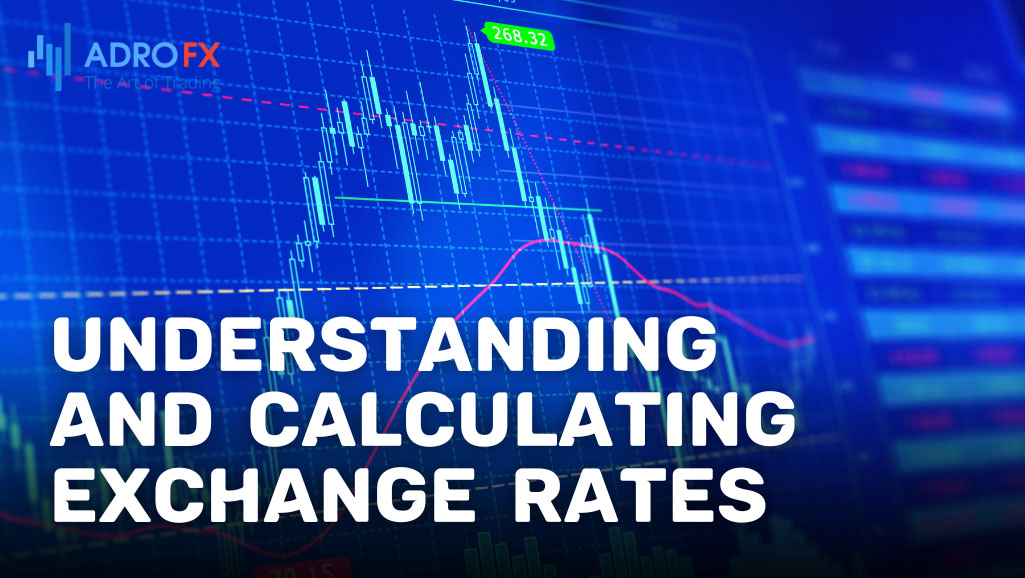
Understanding exchange rates is vital not only for travelers and international investors but for anyone involved in global finance.
For personal finance, knowing how exchange rates impact currency conversion can help you manage your spending more effectively when traveling abroad or purchasing from international vendors. By being aware of favorable exchange rates, you can maximize your purchasing power and save money.
For business finance, exchange rates are crucial in determining the cost of importing goods and the revenue from exporting products. Companies operating in international markets must continuously monitor exchange rates to manage currency risk and optimize their financial strategies. A favorable exchange rate can enhance profit margins on exports, while an unfavorable rate can increase costs for imported raw materials. Additionally, fluctuations in exchange rates can affect financial forecasting and budgeting, making it essential for businesses to understand and anticipate these movements.
In essence, a solid understanding of exchange rates enables better financial planning and decision-making, ensuring that both individuals and businesses can navigate the complexities of global finance more effectively.
Importance in Global Finance
Exchange rates are crucial in shaping the global financial environment. They affect international trade by determining the price competitiveness of goods and services across different countries. A strong currency tends to make a nation's exports more expensive and imports cheaper, which can result in a trade deficit. On the other hand, a weaker currency can enhance export performance while increasing the cost of imports. For investors, exchange rates influence the profitability of investments abroad. Fluctuating exchange rates can lead to either gains or losses, making currency risk an important factor in international investment strategies. Moreover, central banks and governments frequently monitor and sometimes intervene in currency markets to maintain economic stability, underscoring the importance of exchange rates in achieving economic balance.
How Exchange Rates Are Quoted
Grasping how exchange rates are quoted is fundamental for understanding their role in global finance. Typically, exchange rates are expressed as a pair of currencies, with one being the base currency and the other the quote currency. For instance, in the currency pair EUR/USD, the euro is the base currency and the US dollar is the quote currency. The quoted rate indicates how many units of the quote currency are needed to purchase one unit of the base currency.
Direct Quotations
A direct quotation expresses the value of a foreign currency in terms of the domestic currency. For example, if you are in the UK and see a quote of 1 GBP = 1.35 USD (at the moment of writing), it shows how many US dollars are required to purchase one British pound. Understanding direct quotes is essential for evaluating the relative value of foreign currencies against your home currency, which is crucial for making informed decisions about buying or selling currencies.
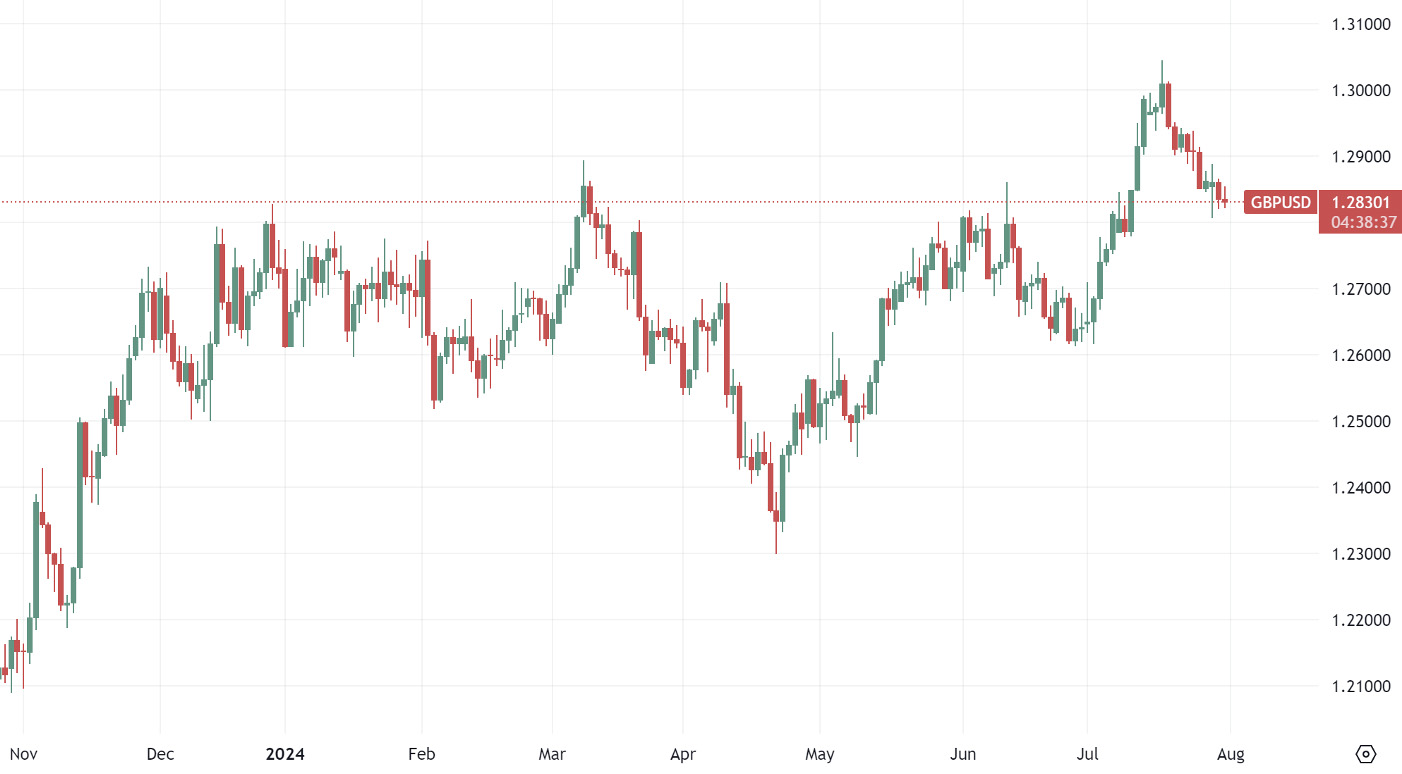
Indirect Quotations
Conversely, an indirect quotation indicates how much of the domestic currency is needed to buy one unit of a foreign currency. For example, if you see 1 USD = 0.93 EUR (at the moment of writing), it means you need 0.93 euros to buy one US dollar. This perspective is particularly important for international investors and businesses dealing with multiple currencies, as it helps assess the value of investments and manage currency-related transactions effectively.
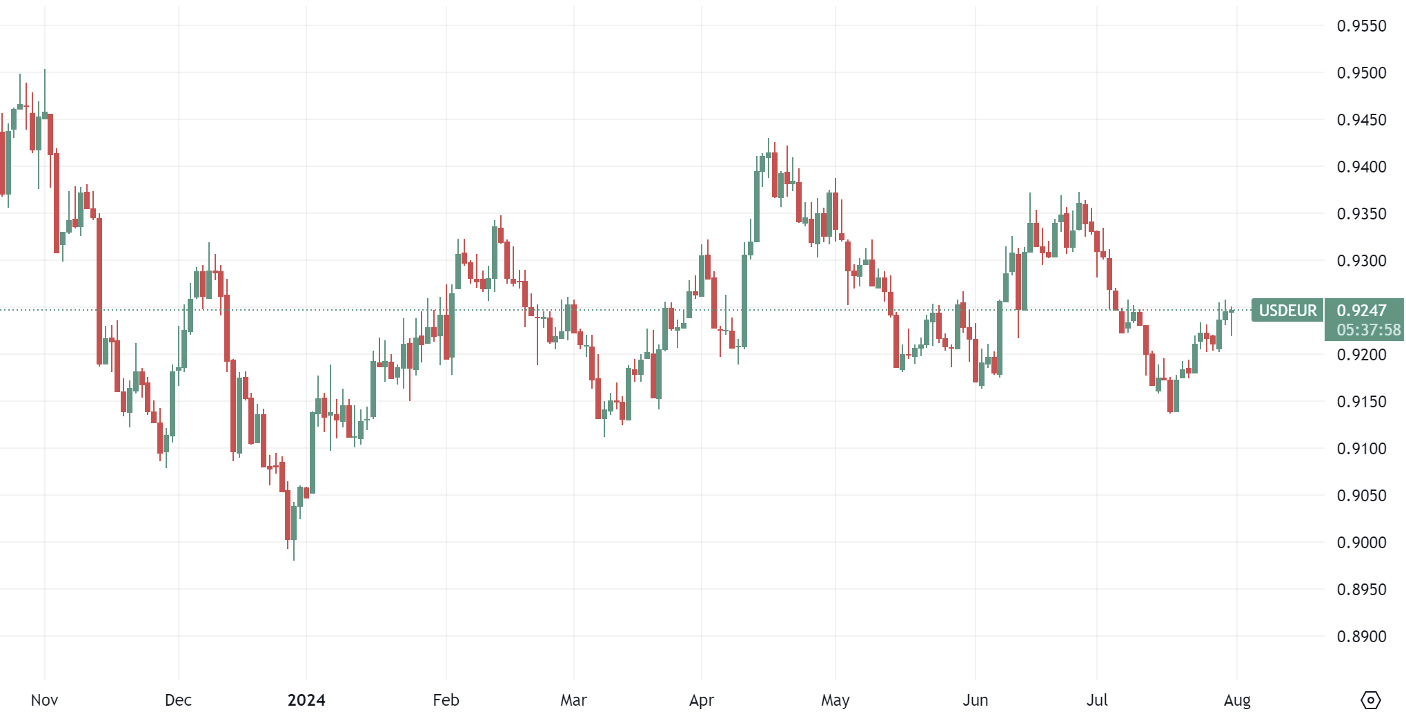
The significance of these quotations lies in their impact on trading strategies and financial planning. Traders and investors use direct and indirect quotations to gauge market conditions and make strategic decisions. For instance, if you are assessing the strength of the euro against the US dollar, understanding how each type of quotation affects your investment's value will help you make more informed choices. Similarly, businesses can leverage these insights to hedge against currency risks and optimize pricing strategies in international markets.
Direct vs. Indirect Quotations
Exchange rates can be quoted in two primary ways: direct and indirect. Direct quotations present the value of a foreign currency in terms of the domestic currency. For instance, if you’re in the UK and see a quote of 1 GBP = 1.28 USD (at the moment of writing), this rate shows how many US dollars are needed to purchase one British pound. In contrast, indirect quotations present the domestic currency’s value in terms of a foreign currency.
Understanding the difference between direct and indirect quotations is crucial because it affects how exchange rate movements are interpreted and acted upon. Depending on the perspective provided by the quotation, traders and investors can make more informed decisions and manage their currency-related strategies more effectively.
By comprehending both direct and indirect quotations, you gain a comprehensive understanding of how exchange rates influence financial outcomes, enabling more strategic trading and investment decisions.
Read more: Understanding The Forces Behind Forex Market Dynamics
Types of Exchange Rates
Exchange rates are not static; they come in various forms, each serving different purposes in international finance. The most common types are spot exchange rates and forward exchange rates, each reflecting a different aspect of currency valuation.
Spot Exchange Rates
Spot exchange rates are the current rates at which currencies can be exchanged immediately. This rate is applicable for transactions that occur "on the spot" or within a short time frame, typically two business days. Spot rates are influenced by current market conditions and provide a snapshot of currency values at a given moment. They are crucial for businesses and travelers who need to make transactions or investments in the near term.
Forward Exchange Rates
Forward exchange rates, on the other hand, are agreed upon today for a currency exchange that will occur at a future date. These rates are used to hedge against the risk of currency fluctuations over time. For instance, a company expecting to receive payments in euros in six months might use a forward contract to lock in an exchange rate today, ensuring predictability and stability in their financial planning. Forward exchange rates are determined based on the spot rate and adjustments for interest rate differentials between the two currencies. They are essential tools for managing currency risk and planning future financial strategies.
Calculating Exchange Rates
Navigating the labyrinth of exchange rates can seem daunting, but breaking it down into manageable steps makes it more accessible. To calculate exchange rates, you need to understand both direct and indirect quotes and how they interplay to provide a clear picture of currency values.
Example of Direct and Indirect Quotes
Direct and indirect quotes offer two sides of the same currency coin. Imagine you’re dealing with the USD/JPY currency pair. A direct quote from the perspective of an American investor might look like this: 1 USD = 150 JPY (at the moment of writing). This means one US dollar can be exchanged for 150 Japanese yen. Conversely, an indirect quote from a Japanese perspective might state: 1 JPY = 0.0067 USD, showing how much one yen is worth in US dollars. To convert between direct and indirect quotes, simply take the reciprocal of the given rate. So, if you know 1 USD = 150 JPY, then 1 JPY = 1/150 USD or approximately 0.0067 USD.
Cross Rates
Cross rates come into play when you need to calculate the exchange rate between two currencies that do not involve your home currency. For example, if you need to find out how many British pounds (GBP) you can get for 1 Canadian dollar (CAD), and you have the exchange rates for CAD/USD and GBP/USD, you can use cross rates. Suppose the exchange rate is 1 CAD = 0.7242 USD and 1 GBP = 1.2835 USD (at the moment of writing). To find the CAD/GBP rate, divide the CAD/USD rate by the GBP/USD rate: 0.7242 / 1.2835 ≈ 0.5644. Therefore, 1 Canadian dollar is approximately 0.5644 British pounds.
Ready to trade smarter? Join AdroFx today and take control of your forex trading journey with cutting-edge tools and a user-friendly interface. Explore the dynamic world of currency exchange and make the most of market opportunities. Start trading with AdroFx now!
Key Factors Influencing Exchange Rates: Economic Indicators, Interest Rates, and Speculation
Exchange rates are influenced by a complex web of factors, each playing a crucial role in shaping the global currency landscape.
Economic Indicators
Economic indicators such as GDP growth rates, unemployment figures, and manufacturing outputs provide insights into a country's economic health. Strong economic performance generally bolsters a currency’s value, while weak indicators can lead to depreciation. For instance, if a country reports high GDP growth and low unemployment, its currency is likely to appreciate as investors seek to capitalize on its strong economic prospects.

Interest Rates
Interest rates are a powerful tool in the currency valuation toolkit. Central banks set these rates, which influence the flow of capital. Higher interest rates attract foreign investors seeking better returns on their investments, leading to an appreciation of the currency. Conversely, lower interest rates can discourage investment and lead to currency depreciation. For example, if the US Federal Reserve raises interest rates, the US dollar might strengthen as investors flock to US assets for higher returns.
Also read: The Power Of Interest Rates: How Central Bank Decisions Shape Forex Trading Strategies
Market Speculation
Market speculation adds a layer of unpredictability to exchange rates. Traders and investors constantly analyze news, economic reports, and geopolitical events, speculating on future currency movements. These speculative actions can lead to short-term fluctuations as traders buy or sell currencies based on their predictions. For instance, if speculation suggests that a country will experience political instability, traders might sell off that country’s currency, causing it to depreciate.
Real-World Applications
Understanding and applying exchange rates is vital in various real-world scenarios, from business operations to personal travel.
How Businesses Utilize Exchange Rates
For businesses involved in international trade, closely monitoring exchange rates is essential for managing costs and revenues efficiently. Exporting companies gain an advantage from a weaker domestic currency, as their products become more affordable to foreign buyers, potentially increasing sales. On the other hand, importers face challenges if their home currency depreciates, as it makes foreign goods more expensive. To mitigate these risks, companies often employ hedging strategies, such as using forward contracts to lock in exchange rates and stabilize their financial outcomes.
Impact on International Trade and Travel
For travelers, exchange rates determine the value of their money abroad. A favorable exchange rate means more purchasing power, while an unfavorable rate can lead to higher expenses. Similarly, international trade is directly impacted by exchange rate fluctuations. A country with a strong currency may face trade deficits as its goods become more expensive for foreign buyers, while a weaker currency could stimulate export growth but increase import costs.
Tools for Monitoring Exchange Rates
Staying updated with exchange rates is crucial for making informed financial decisions, and several tools can help.
Financial News Websites
Financial news websites provide real-time updates and in-depth analysis of currency movements. Websites like Bloomberg, Reuters, and CNBC offer comprehensive coverage of exchange rates, market trends, and economic news. These platforms allow users to track currency fluctuations, read expert commentary, and stay informed about factors influencing exchange rates.
Forex Trading Platforms
For those seeking a more hands-on approach, forex trading platforms offer a dynamic environment for monitoring and trading currencies. AdroFx, for instance, is a notable player in the forex market. It provides users with advanced tools for real-time forex trading, including live charts, technical indicators, and risk management features. AdroFx’s user-friendly interface and extensive range of currency pairs make it an ideal choice for both novice and experienced traders looking to navigate the complexities of the forex market with confidence. By leveraging such platforms, traders can make timely decisions, manage their portfolios, and capitalize on currency movements.
Final Thoughts
Mastering the intricacies of exchange rates is more than just an academic exercise; it's a vital skill for anyone involved in global finance, business, or travel. From understanding how currencies are quoted and calculating exchange rates to grasping the factors that influence these rates, a thorough knowledge of exchange rates equips you to make informed decisions and capitalize on market opportunities.
Whether you're managing international trade, investing across borders, or simply planning a trip, the fluctuations in exchange rates can have a profound impact on your financial outcomes. By staying informed and utilizing the right tools, you can navigate the complexities of the forex market with greater confidence and agility.
For those ready to dive into the world of currency trading, AdroFx offers a powerful and intuitive platform to enhance your forex trading experience. With its advanced features, real-time data, and comprehensive trading tools, AdroFx is designed to support both novice traders and seasoned professionals in making strategic decisions and optimizing their trading strategies.
About AdroFx
Established in 2018, AdroFx is known for its high technology and its ability to deliver high-quality brokerage services in more than 200 countries around the world. AdroFx makes every effort to keep its customers satisfied and to meet all the trading needs of any trader. With the five types of trading accounts, we have all it takes to fit any traders` needs and styles. The company provides access to 115+ trading instruments, including currencies, metals, stocks, and cryptocurrencies, which make it possible to make the most out of trading on the financial markets. Considering all the above, AdroFx is the perfect variant for anyone who doesn't settle for less than the best.


